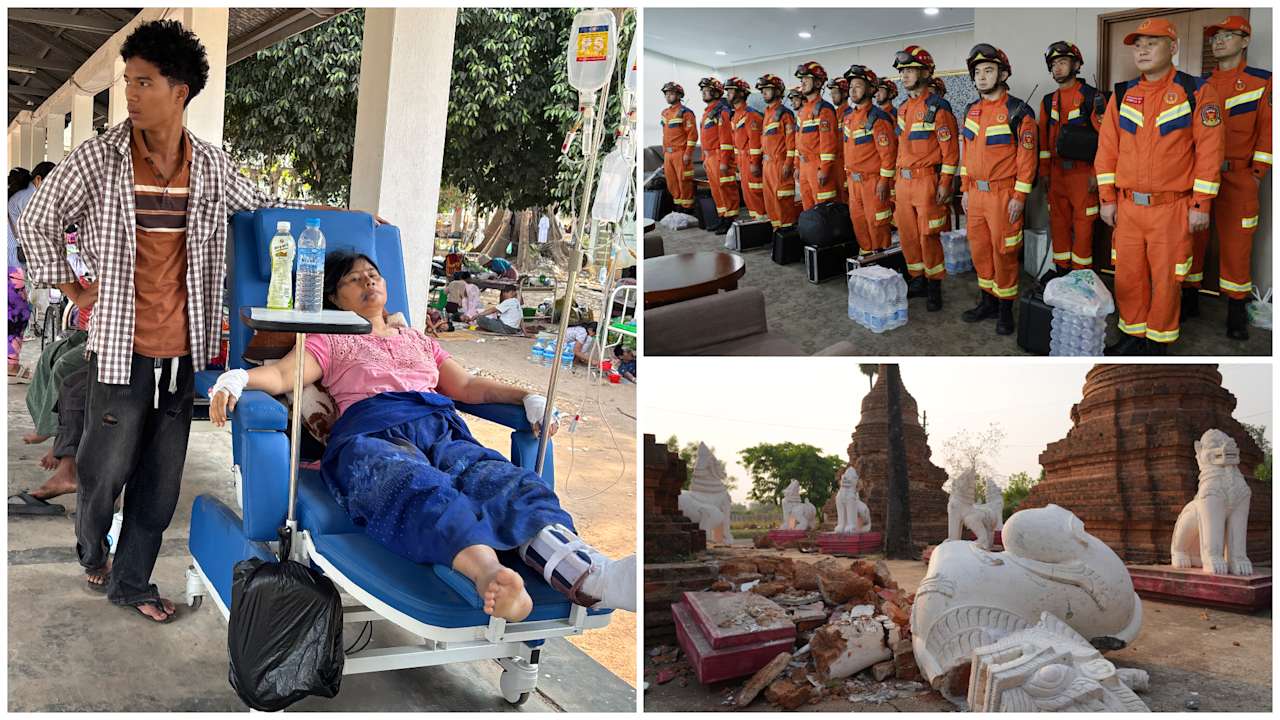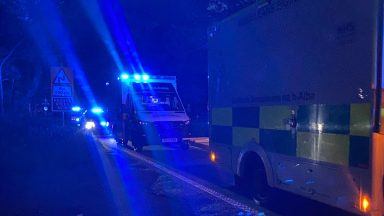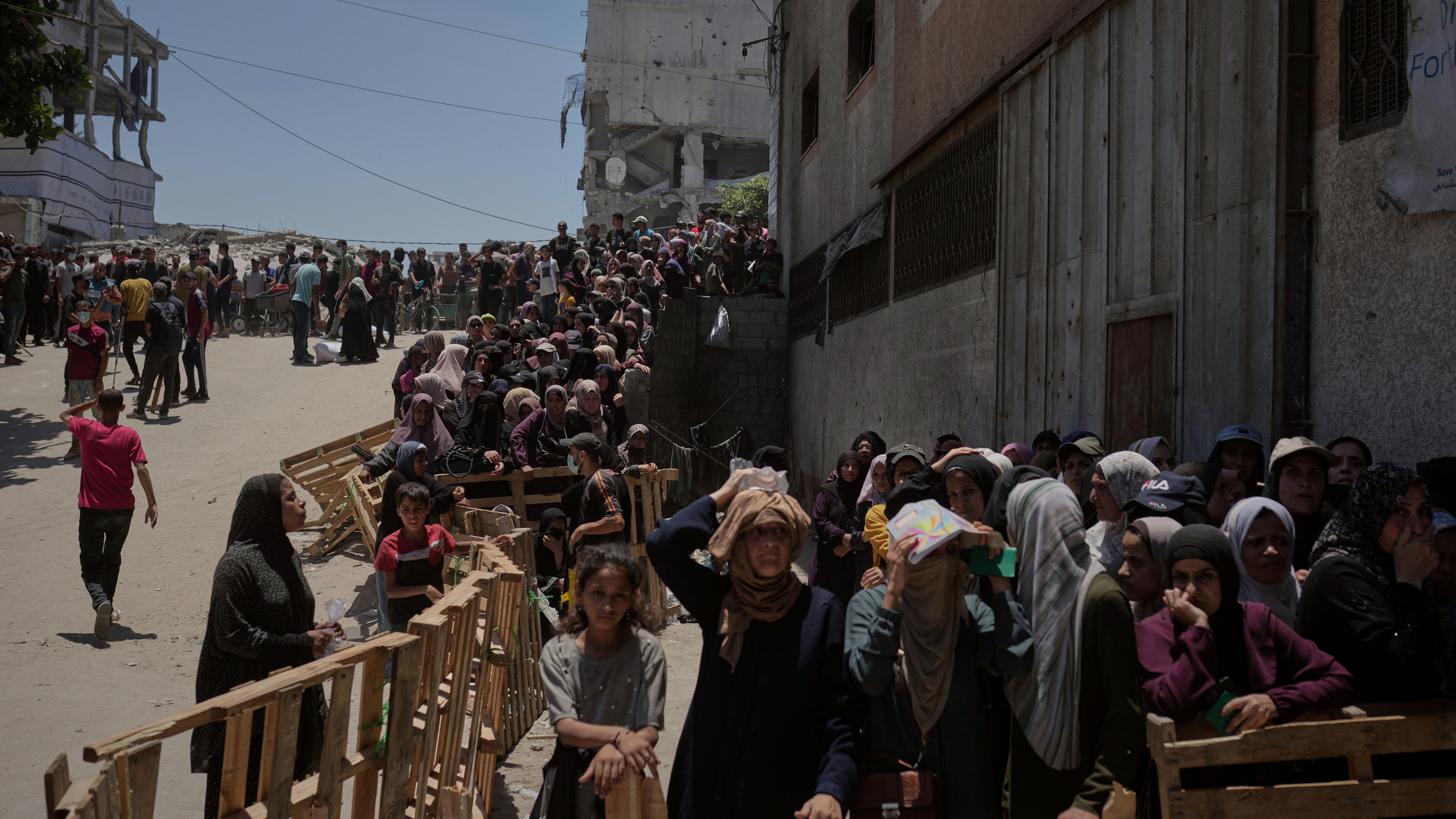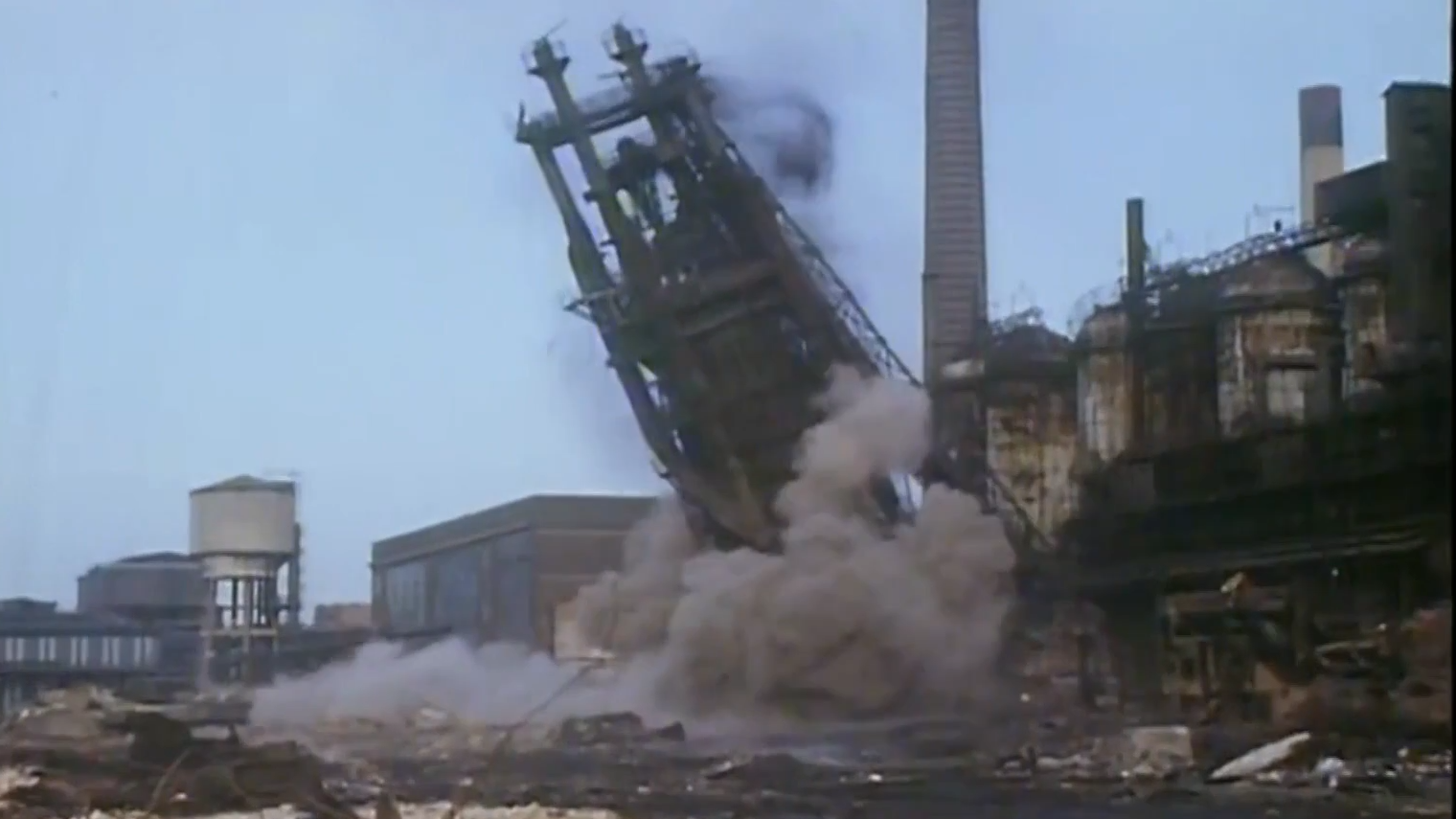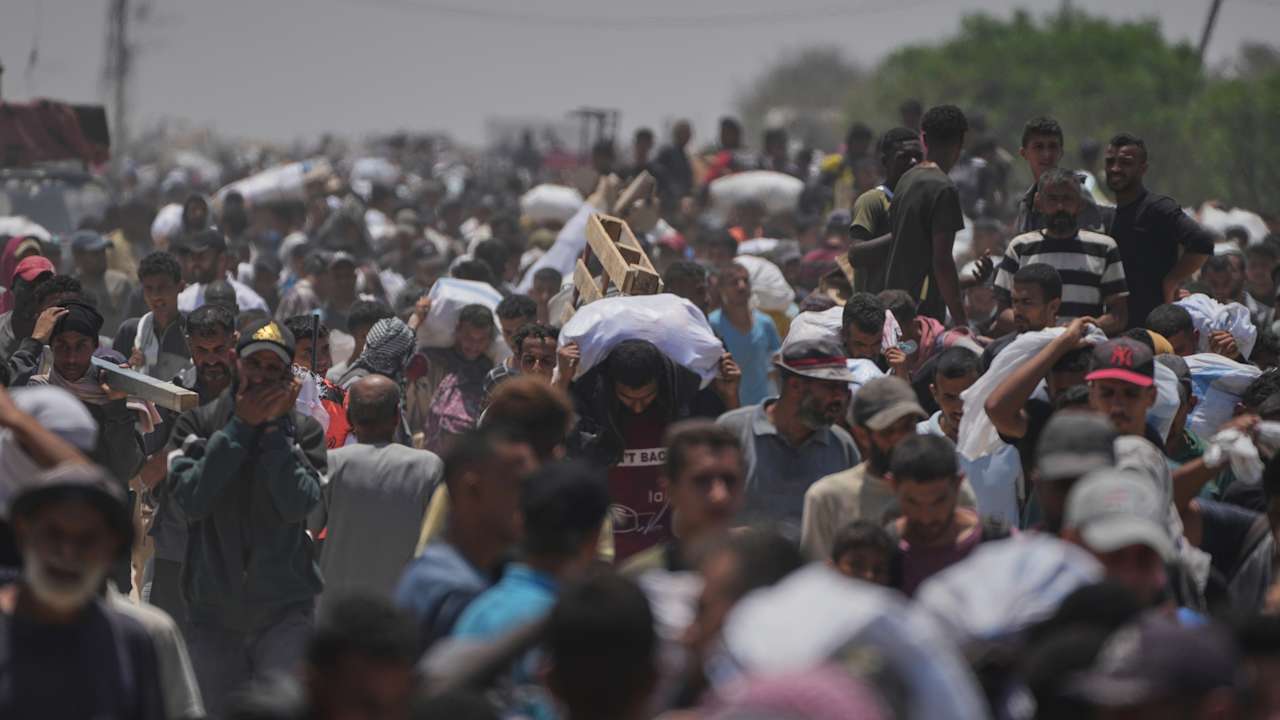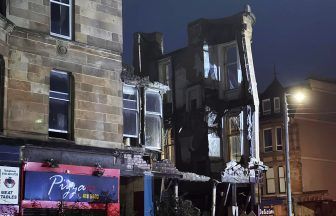A 5.1-magnitude aftershock has hit Mandalay in Myanmar as the country is still reeling from a powerful 7.7-magnitude earthquake on Friday.
The country’s military-led government said on Saturday that 1,644 people have been killed, another 3,408 people injured and 139 were still missing.
Officials warned the figures could rise as more information is gathered.
Friday’s earthquake with an epicentre near Mandalay – Myanmar’s second-largest city – was followed by a number of aftershocks, including one with a magnitude of 6.4.
The United Nations meanwhile has warned of a “severe shortage of medical supplies”
The UN said there was a lack of trauma kits, blood bags, anaesthetics, assistive devices, essential medicines and tend for health workers.
An initial report on earthquake relief efforts issued on Saturday by the UN Office for the Coordination of Humanitarian Affairs said that it’s allocating $5 million (£3.9 million) from a Central Emergency Response Fund for “life-saving assistance.”
Myanmar’s shadow National Unity Government, which coordinates the popular struggle against the ruling military, has declared a unilateral partial ceasefire to support earthquake relief efforts.
The announcement issued on Saturday night by the opposition National Unity Government said that its armed wing will implement a two-week pause in offensive military operations starting Sunday in earthquake-affected areas.
It said it would “collaborate with the UN and nongovernmental organisations to ensure security, transportation and the establishment of temporary rescue and medical camps” in the areas it controls.
In neighboring Thailand, the number of people killed has risen to 17. The quake rocked the greater Bangkok area, home to around 17 million people, and other parts of the country.
Rescue and aid efforts so far
In Myanmar, rescue efforts so far are focused on the country’s second-biggest city Mandalay and Naypyitaw, the capital.
But even though teams and equipment have been flown in from other nations, they are hindered by damage to airports.
Satellite photos from Planet Labs PBC show that the earthquake toppled the air traffic control tower at Naypyitaw International Airport as if sheered from its base.
It wasn’t immediately clear if there had been any casualties from its collapse.
Myanmar’s friends and neighbours have already brought in rescue personnel and relief materials.
China and Russia are the largest suppliers of weapons to Myanmar’s military, and were among the first to step in with humanitarian aid.
In a country where prior governments sometimes have been slow to accept foreign aid, Senior Gen. Min Aung Hlaing, head of the military government, said that Myanmar was ready to accept outside assistance.
China said it has sent more than 135 rescue personnel and experts along with supplies like medical kits and generators, and pledged around $13.8 million (£10.7 million) in emergency aid.
Russia’s Emergencies Ministry said that it had flown in 120 rescuers and supplies, and the country’s Health Ministry said Moscow had sent a medical team to Myanmar.
Other countries like India, South Korea, Malaysia and Singapore are also sending help, and US President Donald Trump said on Friday that Washington was going to help with the response.
Obstacles posed by the civil war
Another major complication is the civil war roiling much of the country, including the quake-affected areas.
In 2001, the military seized power from the elected government of Aung San Suu Kyi, sparking what has since turned into significant armed resistance.
Government forces have lost control of much of Myanmar, and many places are incredibly dangerous or simply impossible for aid groups to reach.
More than three million people have been displaced by the fighting and nearly 20 million are in need, according to the UN.
The interplay of politics and disaster was demonstrated Saturday night, when Myanmar’s shadow National Unity Government announced a unilateral partial ceasefire to facilitate earthquake relief efforts.
It said its armed wing, the People’s Defence Force, will implement a two-week pause in offensive military operations starting Sunday in earthquake-affected areas and it would also collaborate with the UN and international nongovernmental organisations “to ensure security, transportation, and the establishment of temporary rescue and medical camps,” in the areas it controls.
The resistance organization said it reserved the right to fight back in defense if attacked.
Follow STV News on WhatsApp
Scan the QR code on your mobile device for all the latest news from around the country


